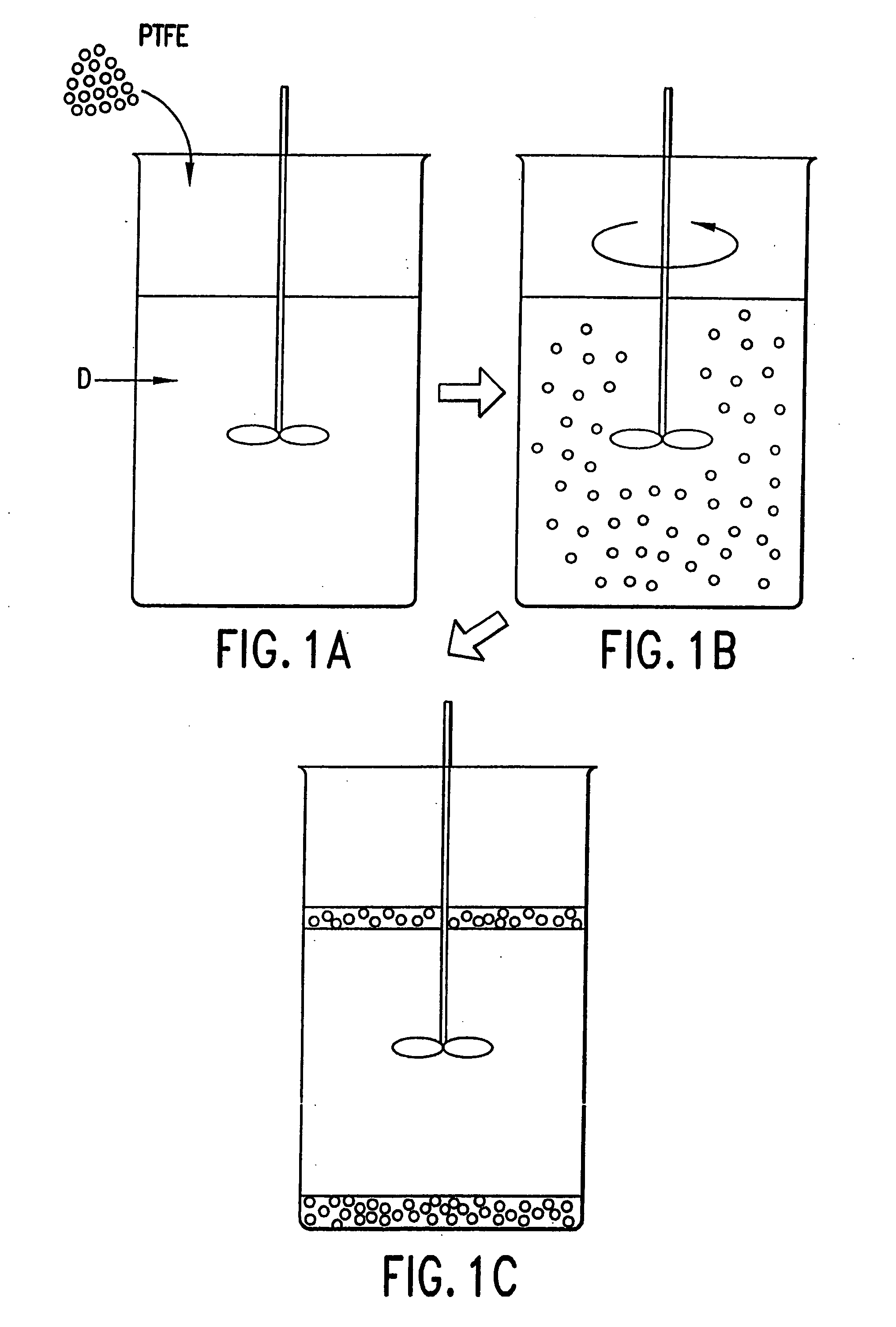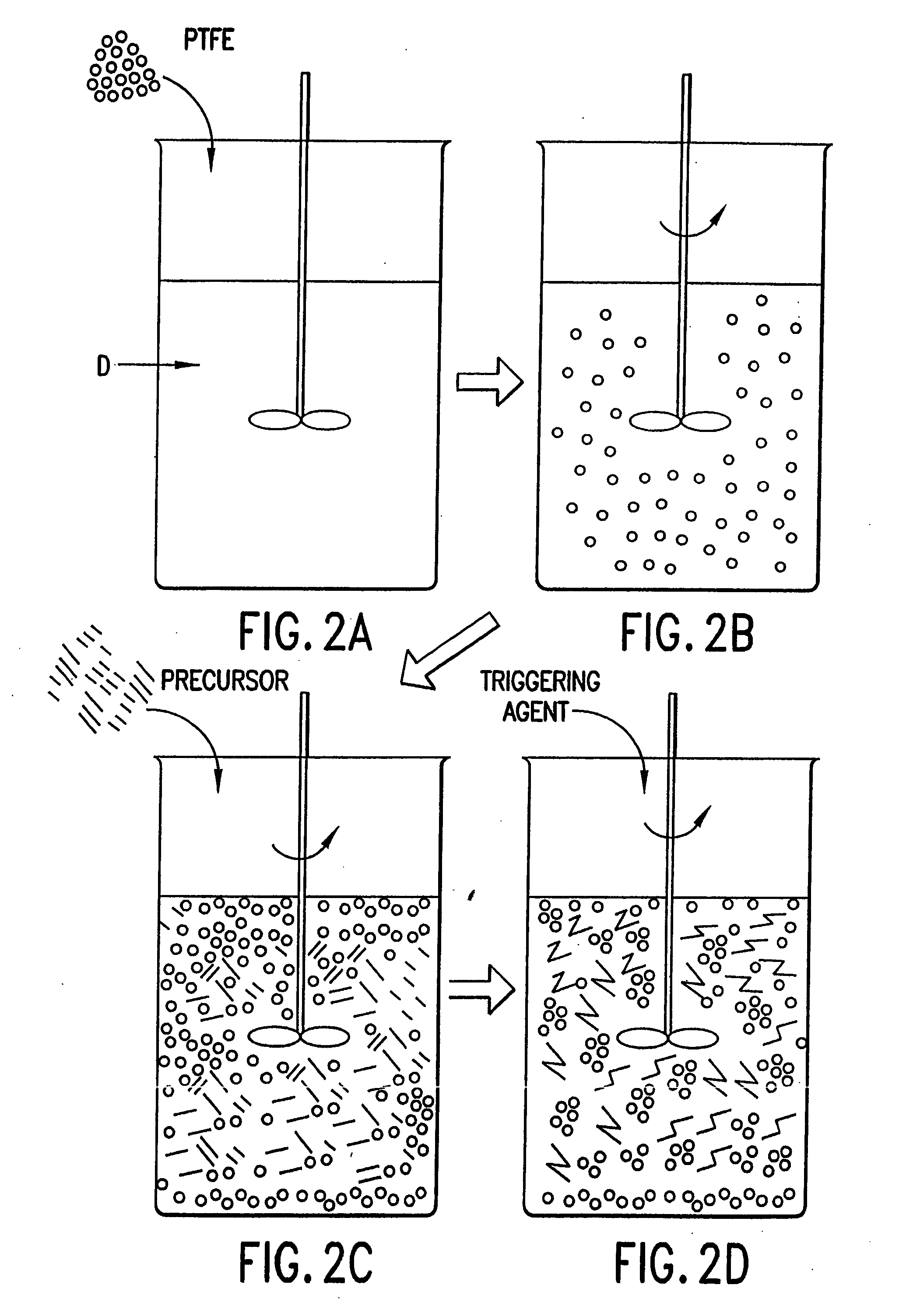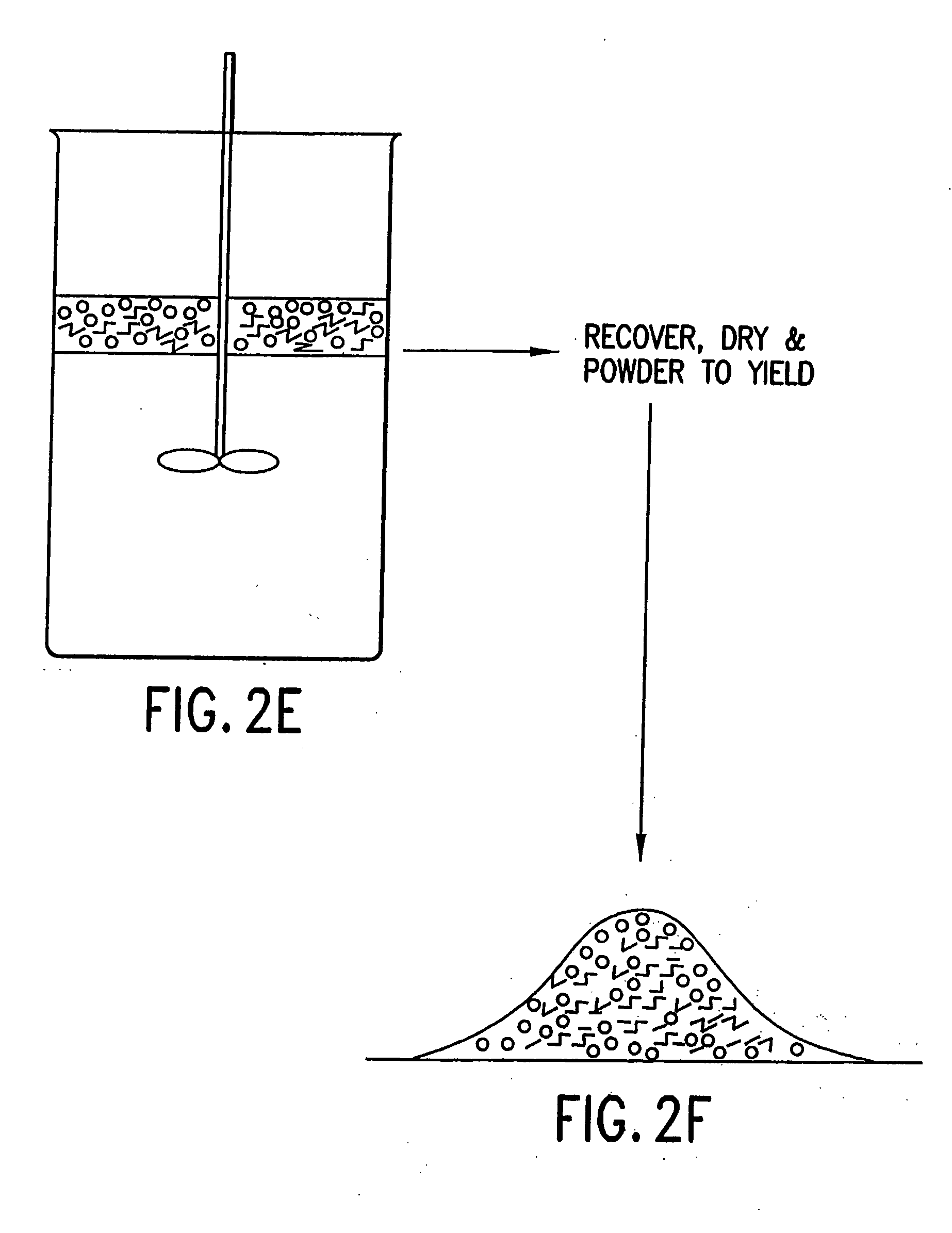Physical methods of dispersing characteristic use particles and compositions thereof
a technology of characteristic use and particle, applied in the field of physical methods of dispersing characteristic use particles, can solve the problems of characteristic use particles that are particle agglomeration or self-association, and ptfe is very difficult to disperse and stabilize (i.e., suspend) in the target fluid system
- Summary
- Abstract
- Description
- Claims
- Application Information
AI Technical Summary
Problems solved by technology
Method used
Image
Examples
example 1
Dispersion of PTFE and PTFE / Organoclay in Organic Solvents
250 mL of hot tap water at 60° C. was placed in a Waring Blender. While mixing at a setting of 6, 10 grams of PTFE (Grade SST 4) was slowly added and mixed for about 5 minutes. Three grams of quat (methyl benzyl dehydrogenated tallow ammonium chloride, sold under the tradename Kemamine BQ-9701C by Witco Corp.) was slowly added to the water / PTFE mixture and mixed for about 5 minutes. Then, 4.23 grams of hectorite clay (commercially available as Bentone MA from Rheox Inc.) was added to the water / PTFE / quat mixture for about 5 minutes. The resulting mixture was transferred to a glass jar and the material floating at the top (“coagulate”) was collected and dried in an oven at 50° C. for 24 hours. After drying, the coagulate composition was ground with a spatula on a glass plate to a powdery consistency.
2.3 grams of the PTFE / organoclay composition was added to 50 grams of toluene in a glass beaker and mixed in a Hamilton Beach ...
example 2
Dispersion of PTFE and PTFE / Organoclay in Polyethylene Preparation of Bentonite Clay Slurry
Solid bentonite clay was dispersed by slowly mixing about 3% by weight of bentonite in 97% by weight of water at room temperature. This mixture was mixed for 8 hours in a high-speed mixer to obtain a clay slurry. Without wanting to be limited to any one theory, it is believed that this mixing step helps to separate out the individual platelets of the bentonite clay. After allowing the clay mixture to stand for 24 hours at room temperature, the clay slurry was separated from the waste that settled to the bottom by decanting. A small portion of the clay slurry was then weighed and placed in an oven for 2 hours at 100° C. to evaporate out all of the water. The dried clay was then weighed to determine the solid weight percentage of the clay in the slurry. The solid weight percentage of the clay was about 1.57% by weight of the clay slurry.
Preparation of Organoclay
Organoclay powder was then o...
example 3
Dispersion of PTFE and PTFE / Organoclay in Mineral Oil Preparation of Clay Slurry
The clay slurry was prepared as described in Example 2. However, samples of this clay slurry were centrifuged for various time periods (from 1 minute to 9 minutes) to determine the time needed to remove most of the large, undissolved foreign particles, as observed under a microscope. The optimum time was determined to be about 5 minutes, and the entire clay sample was centrifuged for about 5 minutes. The solid weight percent of the bentonite clay slurry was then determined as described in Example 2.
Preparation of Organoclay / PTFE
In order to determine the appropriate amount of quat needed to react with the clay, five organoclay / PTFE powder mixtures were obtained according to the different mass proportions provided below in Table 4.
TABLE 4Formulation of PTFE / Organoclay PowderSampleWeightPTFE / ClayClayRatioOrganoclaySlurry(solid ClayQuatPTFE1of Quat / Powder(grams)wt. %)(grams)(grams)(grams)ClayIV2001.6...
PUM
| Property | Measurement | Unit |
|---|---|---|
| diameter | aaaaa | aaaaa |
| particle size | aaaaa | aaaaa |
| particle size | aaaaa | aaaaa |
Abstract
Description
Claims
Application Information
 Login to View More
Login to View More - R&D
- Intellectual Property
- Life Sciences
- Materials
- Tech Scout
- Unparalleled Data Quality
- Higher Quality Content
- 60% Fewer Hallucinations
Browse by: Latest US Patents, China's latest patents, Technical Efficacy Thesaurus, Application Domain, Technology Topic, Popular Technical Reports.
© 2025 PatSnap. All rights reserved.Legal|Privacy policy|Modern Slavery Act Transparency Statement|Sitemap|About US| Contact US: help@patsnap.com



